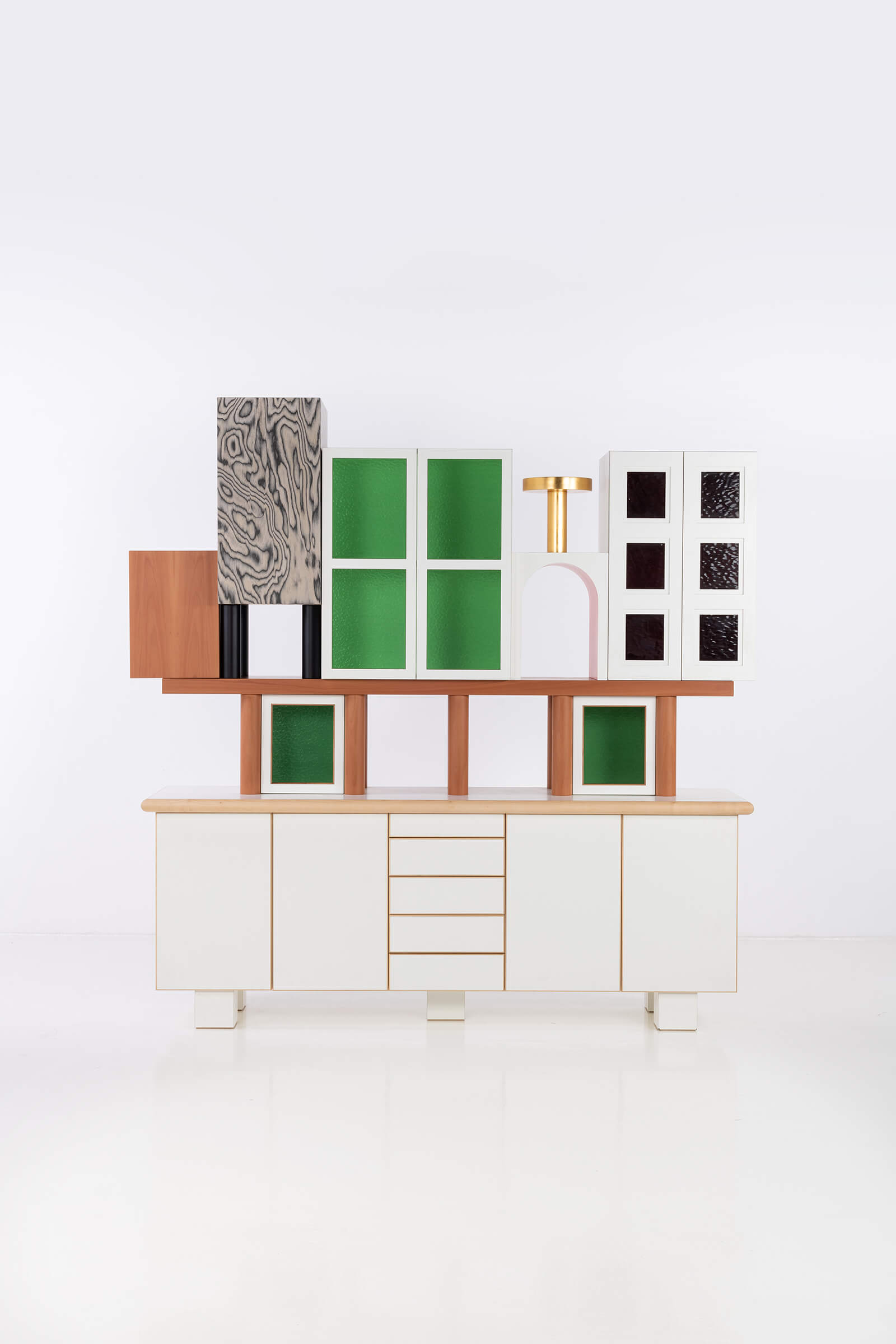Piasa: Italian Design Sale
Two leading Milanese design galleries add pizzazz to Piasa's autumn Italian Design sale, headed up by a Gio Ponti commode.
118 rue du Faubourg Saint-Honoré, 75008 Paris
30th October, 2019
ALTHOUGH THE FRENCH auction house Piasa, founded in 1996, trails behind Sotheby’s, Christie’s and Artcurial, its design sales often bring together strong collections of pieces. The Piasa Italian design sale in October featured works by luminaries such as Gio Ponti, Andrea Branzi and Ettore Sottsass as well as the French master glassmaker Max Ingrand, who regularly collaborated with Italian lighting company Fontana Arte. The 57% of sold lots generated a total of €1.5m.
Intriguingly, a third of the 237 lots derived from Design Gallery Milano and the Milanese gallerist Rossella Colombari. Design Gallery Milano – which represents Branzi, Sottsass, Michele De Lucchi, Pierre Charpin and Johanna Grawunder – consigned 59 pieces, while Colombari (a specialist in 20th-century Italian design and furniture), consigned 20 pieces from the 1940s-1960s.
This blurring of the boundary between the role of the primary market (the gallery) and the secondary market (the auction house) served to augment the number of Piasa’s lots and enabled the gallerists to sell pieces from their storage. The strategy had mixed results.

Ettore Sottsass, ‘Specchio Rotondo – Bharata Series, 1988. (Estimate: €15,000 – €20,000. Sold for €33,800)
COURTESY: Piasa
Among Design Gallery Milano’s consignment was Sottsass’s ‘Specchio Rotondo, Bharata Series’, a dressing table from 1988 (edition of six). Made from marble, mirror and Serena stone, it soared past its €15,000-20,000 estimate to €33,800. However, Sottsass’s sideboard cabinet, ‘Altro Destino/Série Rovine’ from 1992 (edition of nine), whose shelving elements in green, white and black recall housing facades and columns, remained unsold.

Ettore Sottsass, ‘Altro Destino – Série Rovine’, 1992. (Estimate: €18,000 – €25,000. Unsold.)
COURTESY: Piasa
While Branzi’s ‘Pierced Bookcase’ (2006) – a stainless steel structure with delicately suspended glass and wicker shelves (edition of 12) – fetched the mid-estimate figure of €16,900, two of his unique works failed to find a buyer.

Gianfranco Frattini, ‘Albero’ bookcase, circa 1960s. (Estimate €12,000 – €18,000. Sold for €16,900)
COURTESY: Piasa
One was ‘Fugure 4’ (2011) – a mural work combining abstract painting, collaged photographs and small displays of objects like an aluminium double quaver that is centred by a shelf. The other was ‘Vitrage’ (2009) – a room divider made from wavy ribbons of glass encasing synthetic leaves and branches of bamboo, evocative of a windy Japanese landscape.

Andrea Branzi, ‘Fugure 4’, 2011. (Estimate: €20,000-30,000. Unsold.)
COURTESY: Piasa
Although Colombari’s consignment included pieces by Ponti, a desk/shelving/storage unit ensemble (1952) by Marco Zanuso and superposed oak beds (1955) by Carlo Mollino – both unsold – the experimental style of Italian designers was better evidenced elsewhere in the sale. Ponti’s mural mahogany chest of drawers, elegantly balanced on one brass leg, fetched €46,800, the highest price of the evening, far exceeding its €25,000-35,000 estimate.

Gio Ponti, ‘Mural chest of drawers’, 1953. (Estimate €25,000 – €30,000. Sold for €46,800)
COURTESY: Piasa
Works by the lesser-known designer Giulio Alchini, who had a penchant for marrying wood with glass, performed well. A console from the 1950s, with a diagonal line of wood sweeping down to the right-hand side of the floor, then zigzagging back up, went under the hammer for €20,800, three times its estimate, as did a low hexagonal table with long glass arms on metal legs, achieving €15,600.

Giulio Alchini, ‘Mural console’, circa 1950s. (Estimate €7,000 – €9,000. Sold for €20,800)
COURTESY: Piasa
Among the eye-catching offerings were Gianfranco Frattini’s ‘Albero’ bookcase from the 1960s, which went for €14,950. A trained architect, Frattini worked for Ponti – his mentor and a fellow architect-designer – before opening his own studio. Inspired by the form of trees, the ‘Albero’ bookcase is characterised by shelves jutting out like branches from its trunk.

Gianfranco Frattini, ‘Albero’ bookcase, circa 1960s. (Estimate €12,000 – €18,000. Sold for €14,950)
COURTESY: Piasa
It was Ingrand’s ‘Dahlia’ ceiling lamp, produced by Fontana Arte in around 1954, featuring 16 elongated petal-shaped lights of blue-tinted glass, that led the lighting, fetching €32,500, surpassing the estimate. Also exemplifying how Ingrand embraced coloured glass and precise shapes was a pair of pale green glass wall lights from 1990 that sold for €27,300.

Max Ingrand, ‘Dahlia’, circa 1954. (Estimate €18,000 – €25,000. Sold for €32,500)
COURTESY: Piasa
Piasa auction house – has established a unique identity through its cutting-edge selection in Modern and Contemporary art, Design, Jewellery, and works of art.







